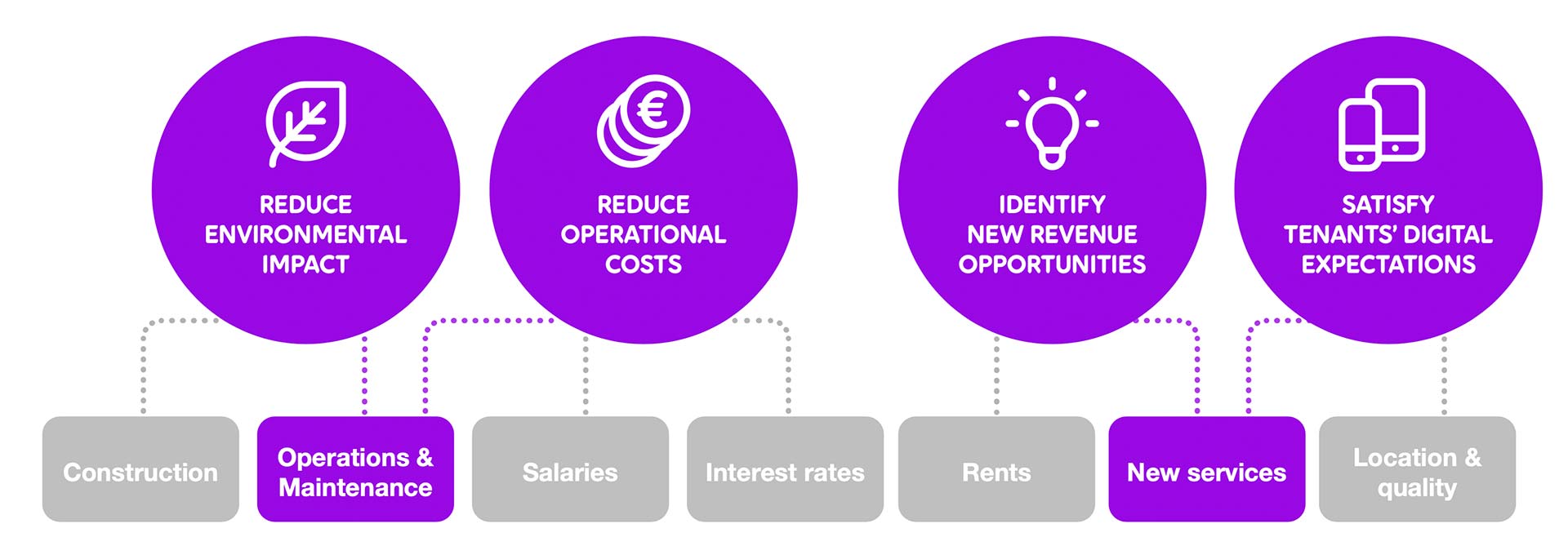Where can the digitalization of buildings have the biggest impact?
In our recent report, "Digitalization of Buildings in the Nordics and Baltics", four industry goals were identified: reducing operational costs, creating new revenues, increasing sustainability and meeting tenant expectations. Here, we look at which of these goals Digitalization can have the biggest impact on.
This is an extract from: Digitalization of Buildings in the Nordics & Baltics. You can download the full report here
Faced with both profitability challenges and trends likely to reshape the industry, we found that real estate has turned its attention to digitalization. 87 percent of the interviewed facility owners in the Nordics and Baltics rated the potential of digitalization as “very high” and the remaining 13 percent rated it as “high”. Consequently, a majority also expect their investments in the area to increase in the next few years.
Fundamental industry dynamics explain why this is the case. Facility owners have limited options for achieving their four key goals. As shown in the illustration below, most areas are difficult to influence, leaving operations and maintenance and new services:
 Industry goals and areas where digitalization can have the biggest impact
Industry goals and areas where digitalization can have the biggest impact
1. Operations and maintenance costs account for roughly 50-80 percent of facility owners’ total costs. While interest rates and salaries are largely fixed, there is undoubtedly great potential to lower costs and reduce environmental impact by reducing energy and water consumption.
2. Approximately 98 percent of facility owners’ revenues come from rents, which are difficult to change, in some cases due to rent regulations. As location and physical design are unlikely to change significantly after construction is com- pleted, new services will be the key path forward to generate new revenues, as well as to satisfy tenants’ digital expectations.
Digitalization in general and IoT-enabled solutions and data insights in particular are great enablers for both operational efficiency and new services, and a broad set of use case areas is readily available. Some players have already made substantial investments. One example is Rikshem, a large Swedish facility owner, which is now implementing IoT solutions and a common platform in all of its 30,000 apartments, half of which will be connected by 2021. This will provide a means of monitoring and analyzing the facilities, and thereby enable more efficient operations, reduce energy consumption and generate insights for predictive maintenance. Read more.
In the report, you can read about a number of global examples of facilities that have implemented digitalization and IoT solutions with great results. While these landmark cases show the extent to which buildings can be made intelligent and sustainable, most facilities can do a lot with less. IoT-enabled solutions can be deployed almost anywhere and on an initially small scale and still provide immense benefits. We also outline what solutions are available and which pain points they can alleviate.
Cookie notification
Cookies allow us to optimize your use of our website. We also use third-parties cookies for advertising and analytics. Please read our Cookie Policy for more information.

